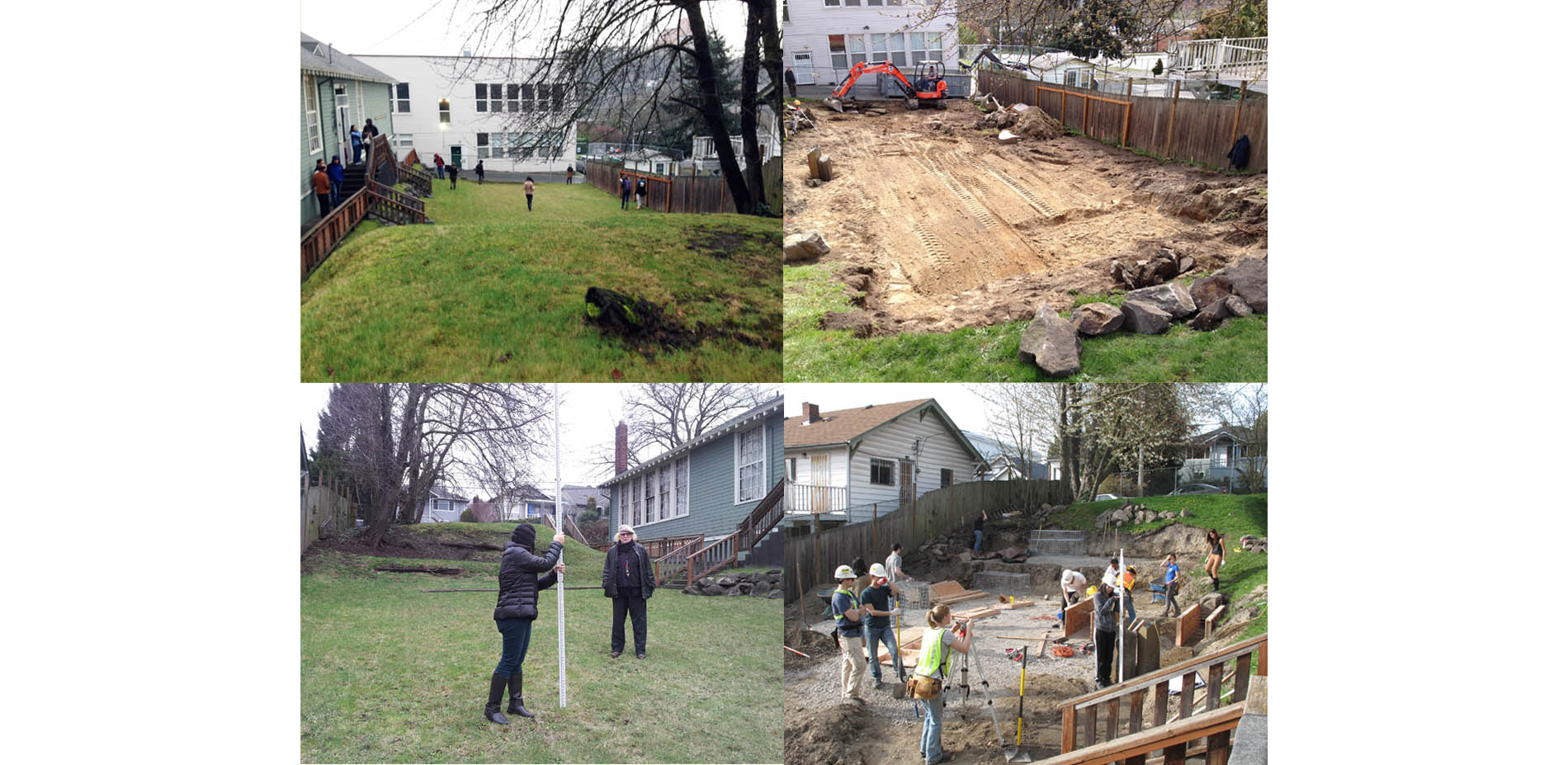
The site abuts the community center, flanked on the south by an alley and on the west by a neighbors house.
Photo Credit: Daniel Winterbottom, FASLA
Media: Please submit high-resolution image requests to images@asla.org.
Community engagement methods included focus groups, spatial and programing exercises, and photo preference boards.
Photo Credit: Daniel Winterbottom, FASLA
Media: Please submit high-resolution image requests to images@asla.org.
Site plan and illustratives.
Photo Credit: Daniel Winterbottom, FASLA
Media: Please submit high-resolution image requests to images@asla.org.
Illustrative drawings and process/material selections.
Photo Credit: Daniel Winterbottom, FASLA
Media: Please submit high-resolution image requests to images@asla.org.
Models were used extensively for the community engagement and helped the participants visualize the garden and convey the true spatial relationships being proposed.
Photo Credit: Daniel Winterbottom, FASLA
Media: Please submit high-resolution image requests to images@asla.org.
Before and after.
Photo Credit: Daniel Winterbottom, FASLA
Media: Please submit high-resolution image requests to images@asla.org.
The entry gate was crafted as a landmark element to draw people down the alley into the garden.
Photo Credit: Daniel Winterbottom, FASLA
Media: Please submit high-resolution image requests to images@asla.org.
The rain garden treats and infiltrates all the water from the site and 1/3rd of the roof runoff that prior to the project entered the storm drainage system.
Photo Credit: Daniel Winterbottom, FASLA
Media: Please submit high-resolution image requests to images@asla.org.
The bronze line represents the concept of Kintsugi and marks the journey from Seattle to many of the Northwestern internment camps.
Photo Credit: Daniel Winterbottom, FASLA
Media: Please submit high-resolution image requests to images@asla.org.
The gathering pavilion recalls basketry and a weaving of materials and textures.
Photo Credit: Daniel Winterbottom, FASLA
Media: Please submit high-resolution image requests to images@asla.org.
The garden has become a central civic and cultural gathering space where formal celebrations take place, neighborhood residents meet informally and children use as a play space.
Photo Credit: Daniel Winterbottom, FASLA
Media: Please submit high-resolution image requests to images@asla.org.
Craft was an important cultural component expressing the care and attention to joinery and expression.
Photo Credit: Daniel Winterbottom, FASLA
Media: Please submit high-resolution image requests to images@asla.org.
The detailing lends a continuity to the site elements and references screen patterns found in Japan.
Photo Credit: Daniel Winterbottom, FASLA
Media: Please submit high-resolution image requests to images@asla.org.
Students rotate through various tasks working along side the community members.
Photo Credit: Daniel Winterbottom, FASLA
Media: Please submit high-resolution image requests to images@asla.org.

















